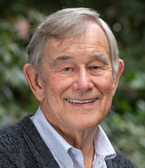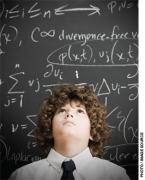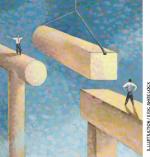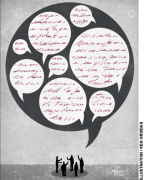In Vancouver last winter, the United States proved its competitive spirit by winning more medals—gold, silver, and bronze—at the Winter Olympic Games than any other country, although the German member of our research team insists on pointing out that Canada and Germany both won more gold medals than the United States. But if there is some dispute about which Olympic medals to count, there is no question about American math performance: the United States does not deserve even a paper medal.
General Audience Articles
Democrats and Republicans in Washington, D.C., are more polarized today than they have been in nearly a century. And among the general public, party identification remains the single most powerful predictor of people’s opinions about a wide range of policy issues. Given this environment, reaching consensus on almost any issue of consequence would appear difficult. And when it comes to education policy, which does a particularly good job of stirring people’s passions, opportunities for advancing meaningful policy reform would appear entirely fleeting.
Much ado has been made about setting high standards over the past year. In his first major address on education policy, given just two months after he took the oath of office, President Barack Obama put the issue on the national agenda.
What do Americans think about their schools? More important, perhaps, what would it take to change their minds? Can a president at the peak of his popularity convince people to rethink their positions on specific education reforms? Might research findings do so? And when do new facts have the potential to alter public thinking? Answers to these questions can be gleaned from surveys conducted over the past three years under the auspices of Education Next and Harvard’s Program on Education Policy and Governance (PEPG).
Americans clearly have had their fill of a sluggish economy and an unpopular war. Their frustration now may also extend to public education. In this, the second annual national survey of U.S. adults conducted under the auspices of Education Next and the Program on Education Policy and Governance (PEPG) at Harvard University, we observe a public that takes an increasingly critical view both of public schools as they exist today and, perhaps ironically, of many prominent reforms designed to improve them.
On July 14, 2006, the U.S. Department of Education’s National Center for Education Statistics (NCES) released a study that compared the performance in reading and math of 4th and 8th graders attending private and public schools. The study had been undertaken at the request of the NCES by the Educational Testing Service (ETS).
Whether or not the supply of schools can meet the parental demand for choice has been central to the school choice debate for more than a decade. Unfortunately, the two sides to the debate often carry their argument to the extreme. On the one side, one finds, to coin a term, the strict inelasticians: Those who assume that supply will not change in response to an increase in demand. When model builders make such an assumption, they easily reach the conclusion that choice systems will necessarily be highly stratified.



